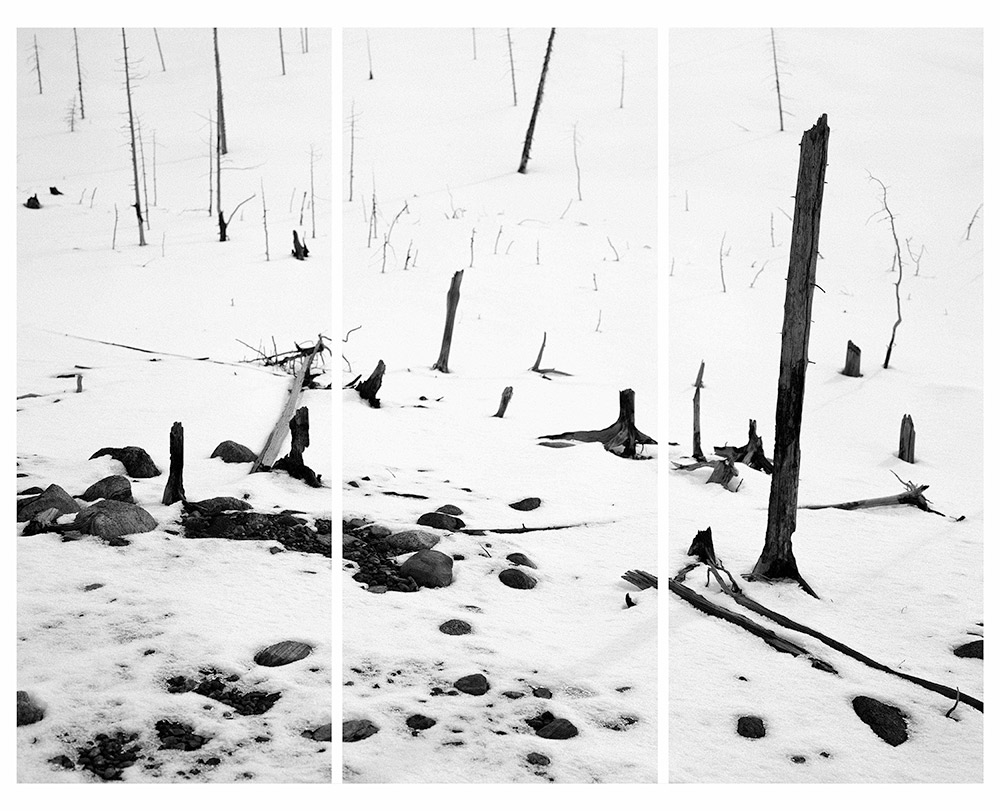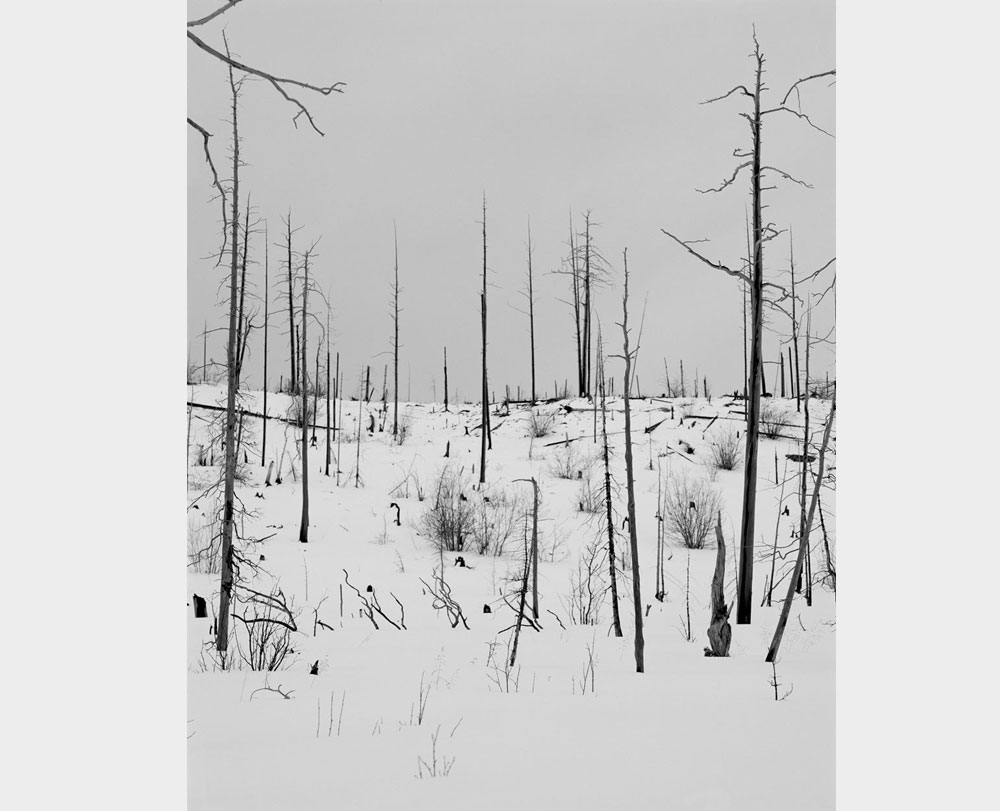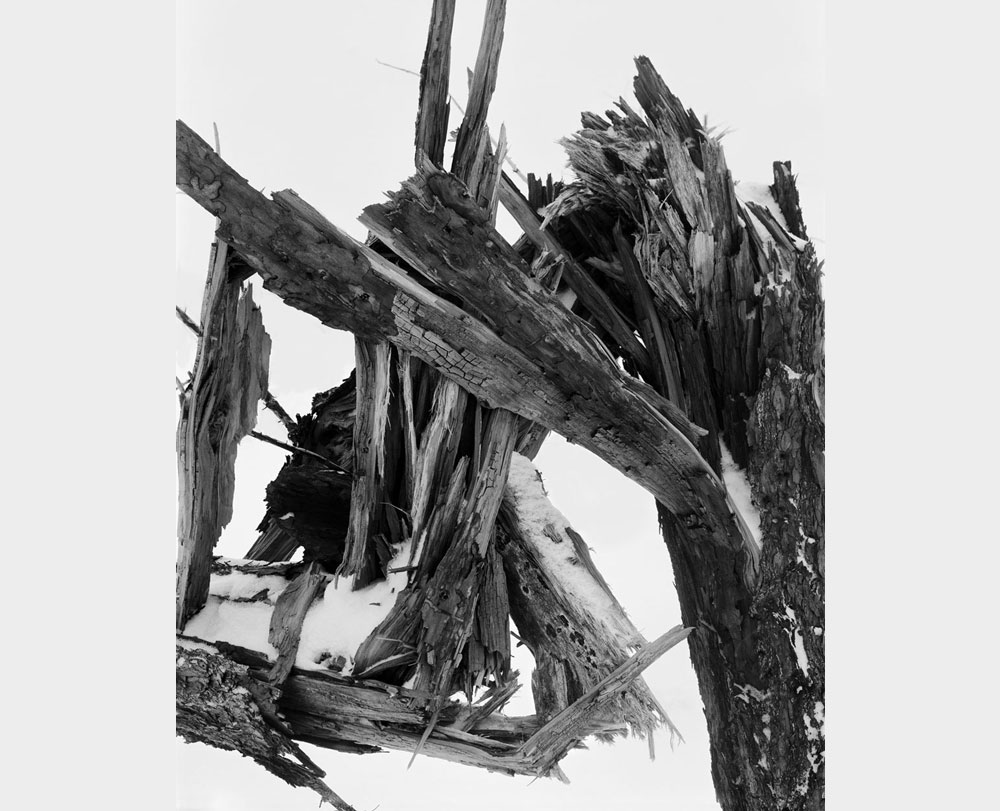Darren Almond, born in 1971 at Wigan, UK. Lives and works in London.
Darren Almond’s work tackles the concepts of time and travel, as well as the themes of personal and historical memory, through evocative reflections translated into videos, installations, sculptures and photographs.
Time, explored in all its different conceptions, becomes a key and recurring feature of the British artist’s studies. This has been true from his first solo show in 1995 entitled “A Real Time Piece”, a video showing his empty studio with a digital clock on the wall that amplified the passing of each minute, through to “Tide”, an installation in which 600 perfectly aligned digital clocks covering the entire surface of the wall recorded the passing of time in unison.
Many of Almond’s works grow out of his ability to reach into inaccessible and remote geographical areas such as the Arctic Circle, Siberia, China’s holy mountains and the source of the Nile.
In Indonesia the artist follows a miner during a day’s work, extracting sulphur from the inner rim of a crater and carrying it all the way down the steep slope of the volcano, creating “Bearing”, a video shot with a high-definition camera.
In “Schacta”, Almond filmed the activities of a tin mine in Kazakhstan and set them against an evocative soundtrack, a field recording of the performance of a local musician/shaman.
Other works explore more personal themes: “Traction” is an ambitious three-screen projection portraying the artist’s father whilst revealing the artist’s own concern about the passing of time.
A similar intimacy is evoked in the video-installation “If I Had You”, short-listed for the Turner Prize (2005): a sensitive portrait of his grandmother, and his youthful reminiscences narrated through four mutually interacting videos.
In “Terminus”, Almond negotiated the relocation of the original bus stop in the town of Oświęcim (Auschwitz in German) in order to create a moving installation about historical loss.
All these themes, including time and travel in particular, also feature prominently in his series of landscape photographs entitled “Fullmoon”, begun in 1998. Almond captures the full moon in various parts of the world, using fifteen-minute long exposures.
These peculiarly beautiful images seem almost unreal: the landscapes appear to be bathed in a surprisingly translucent light so that night seems to have turned into day.
In 2014 Taschen Books published a substantial photo-book dedicated entirely to his Fullmoon series.
Main solo exhibition: Art Tower Mito, Japan (2013), Sala Alcalá 31, Madrid, Château Gallery, Domaine Régional de Chaumont-sur-Loire (2012); The High Line, New York, Villa Merkel, Esslingen, L’Abbaye de la Chaise Dieu, Chaise Dieu; Frac Haute-Normandie, Rouen e FRAC Auvergne, Clermont Ferrand (2011), Parasol Unit (2008), SITE Santa Fe (2007), Museum Folkwang, Essen (2006), K21, Düsseldorf (2005), Kunsthalle Zürich (2001), Tate Britain (2001), De Appel (2001) and The Renaissance Society, Chicago (1999).
Main collective exhibition: Helmhaus, Zurich, 6th Biennale da Curitiba e Miami Art Museum (2011), MAC/VAL, Vitry-sûr-Seine, (2010), the Tate Triennial, Tate Britain and Frac Lorraine, Metz (2009), Moscow Biennale (2007), The Turner Prize, Tate Britain (2005), The Busan Biennale (2004), Biennale di Venezia (2003), Berlin Biennale (2001), ‘Sensation’ (1997-1999).





